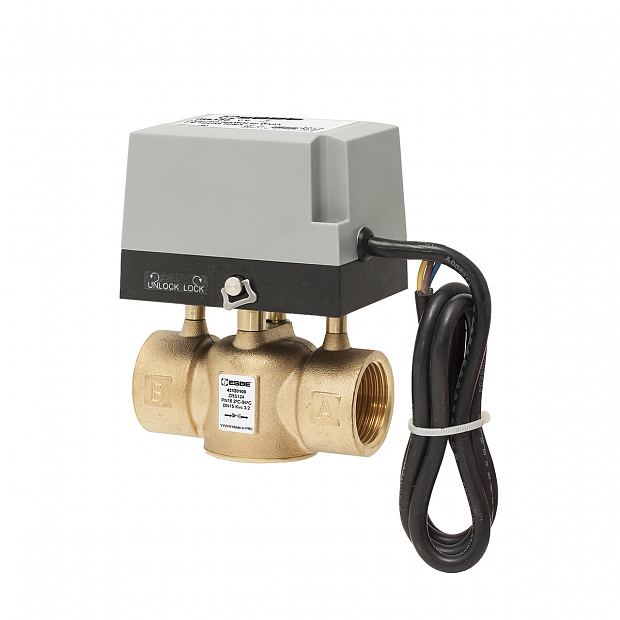Price range
Auxiliary contact
Cable length
Connection size
Connection type
Flow
Medium
Medium temperature
Thread type
Valve type

Zone valves are designed to control the direction of flow to individual zones A-B of hydraulic circuits (most often for switching the heating circuit and accumulation) - whether in ordinary domestic (boilers, radiators or hot water heating) or industrial equipment.
In the two-way design, zone valves are used to quickly switch or close the path between two circuits. They can also be used to control the flow direction to individual zones of heating, cooling or solar systems, water distribution systems, etc. Two-way valves only close or open the individual circuits. A spring is placed in the valve body to ensure that the valve is mechanically switched to the initial position in the event of a power failure. The valve body is made of brass and is fitted with external threads for mounting.
Three-way zone valves operate in the heating, water distribution, cooling or solar circuit by replacing their function as a "switch". They allow flow from one common inlet to one of the two outlets selected. It depends on the momentary switching. Maximum differential pressures for safe operation, supply voltage and medium temperature are always specified for each type of zone valve.